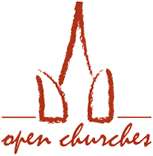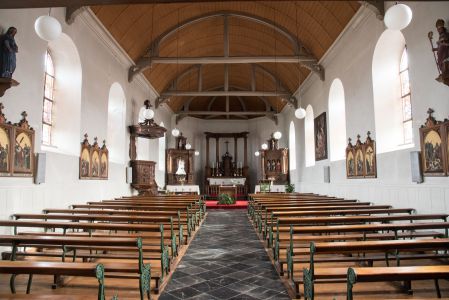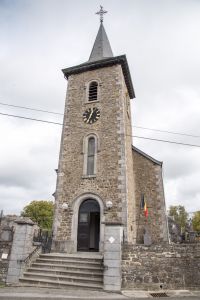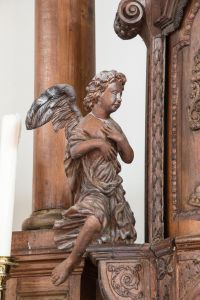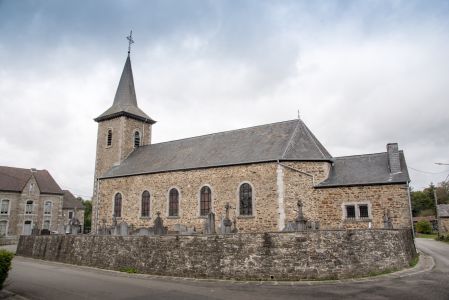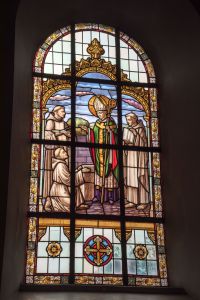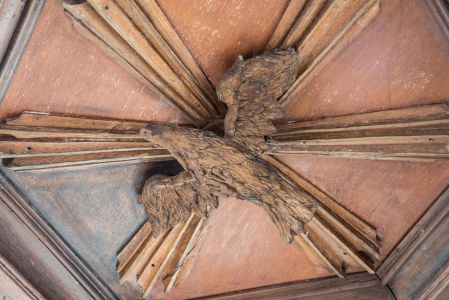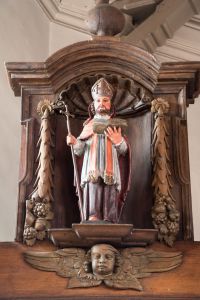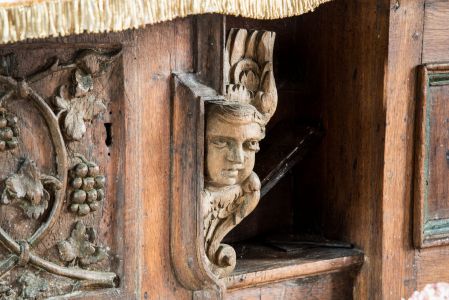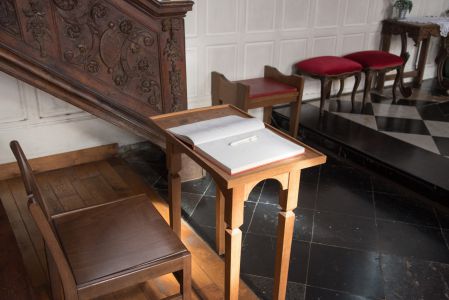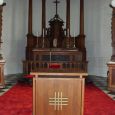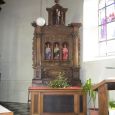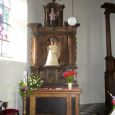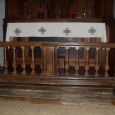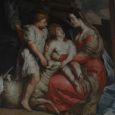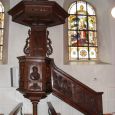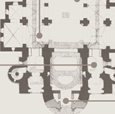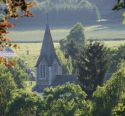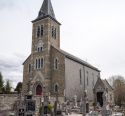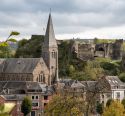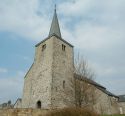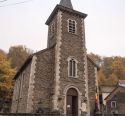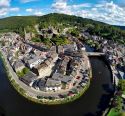Church | XIX | Classical | Catholic Church

Map
Opening hours
01 June - 30 September
Mon 10.00 - 18.00
Tue -
Wed -
Thu -
Fri 10.00 - 18.00
Sat 10.00 - 18.00
Sun 10.00 - 18.00
Religious offices
Sunday : 11.15 am
Description
This old church from 1586 was enlarged in 1860 and the tower dates from this period. It was restored in 1887. Inside are considerable 18th century furnishings.
Photos
Remarkable elements
Main altar with retable
This is an altar with an altarpiece by an unknown author between 1701 and 1750, in partially gilded carved oak. The "Rubens style" painting, brought back from Malines in 1812, can be seen between the two interior Corinthian columns. There were purple velvet drapes around the sides, the statue occupying the space between the right and left columns, the statue resting on either side of a cylindrical shaft, and the large triangle - crowning the aforementioned painting - symbolising the Trinity, with golden rays emanating from a central eye. These disappearances date from the 1953 restoration.
South altar (right)
Like the altar on the left, this one is made of oak, formerly partially gilded, dating from 1700-1750. Three personifications of the theological virtues - Faith, Hope and Charity - occupy the altar-portico. The polychrome statues, each 60 cm high, have identical heads crowned with a crown, and hold a feather in their right hands. The distinction is twofold: the left hand and the colour of the toga: with book and blue (Faith), on the heart and green (Hope), on the chest and garnet (Charity). The altar is crowned by the Franciscan Saint Anthony of Padua carrying the Infant Jesus.
North altar (left)
Every year, from Maundy Thursday to the Easter Vigil, the repository or small tabernacle houses the Body of Christ. For these days, the altar has long been wrapped in large green and red strips of parachute fabric. Above the repository, a niche has always held a "statue" of the Virgin carrying the Infant God, evoking the "little Jesus of Prague", a familiar pairing found in many local churches.
A replica of the wooden statue of St Martin, placed in Piconrue, occupies the upper niche (the statues on the right-hand altar are also replicas of statues placed in Piconrue, Bastogne).
Forged-iron communion bench
Let's remember how it was used. On the choir side, a red velvet drapery enhanced its small, partially gilded columns. On top of this was a large white tablecloth, which, at the beginning of the Agnus Dei, an acolyte would raise and turn to face the congregation. The faithful, kneeling in rows, mouths open, tongues outstretched (what a sight!), thus received the body of Christ. That was less than half a century ago!
Occasionally, it served another purpose: it was used to welcome a talkative or unruly lad that the teacher had pulled by the ear so far. More rarely, it might be the parish priest or a mother who was fed up with her son's behavior.
Rubens Painting
The painting, depicting the young Mary with the infant Jesus and her elderly cousin Elizabeth with John the Baptist, was brought from Maline in 1812. It decorated the main altar. Moving this painting was an extremely unfortunate initiative. In countless churches, a large, high-quality painting occupies the center of the main altar without distracting from prayer or meditation. Here, does the void thus created enhance the high altar? This is less certain since the high altar no longer benefits from its partial gilding.
Pulpit
A staircase leads up to the hexagonal oak basin, like the rest of the altarpiece. The four outer panels bear the effigies of the Evangelists with, below them, their respective symbols, each attached to a fictitious "drawer". The sculptor has inverted the first two, as St Mark precedes St Matthew (angel). St Luke (bull) and St John (eagle) appear in the conventional order.
Under the baldachin, a dove, formerly gilded, symbolizing the Holy Spirit as at the baptism of Jesus in the Jordan, was supposed to inspire the preacher. Above the lampshade, a musical angel blows a trumpet; the musical instrument is like an announcement of the Good News.
Nearby
Circuit
Churches of the Ardennes, from century to century
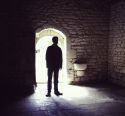
From bell tower to bell tower in the heart of the Ardennes (car 2 route) - Several churches are built on the very site of very old oratories, of which they have preserved traces. Some were destroyed and then rebuilt, especially after the Religious Wars. Others, more recent, testify to the styles in vogue at the time of our (great-)grandparents....
Each village has its own church
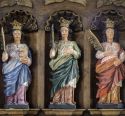
Tours "From bell tower to bell tower in the heart of the Ardennes" (bike tour 2) - The first parishes of the Ardennes were far apart. It took miles to get to Mass... Since the end of the 19th century, each village has wanted to build its own church. What an investment for the local community, but what a pride too!
